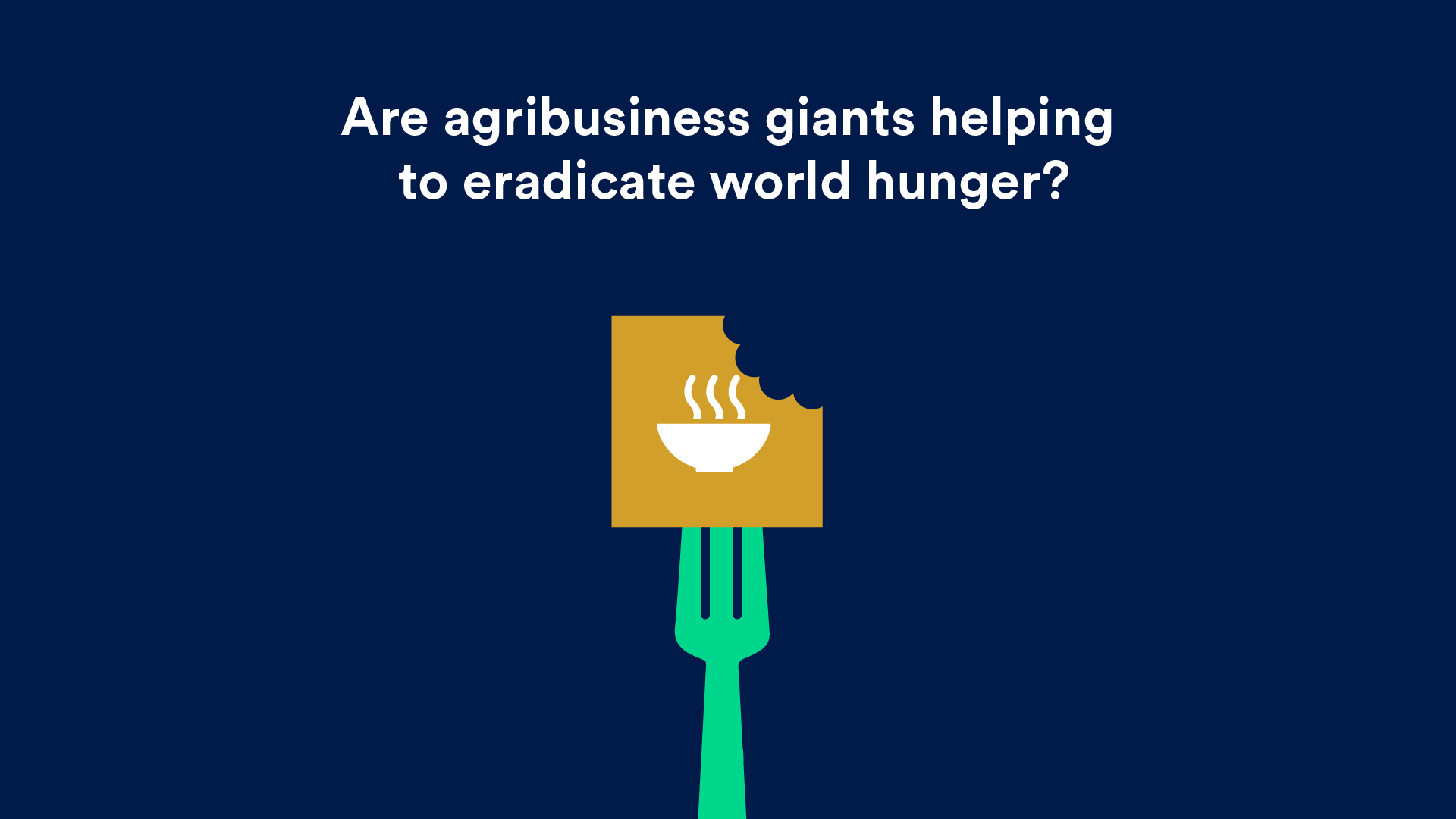Positive impact : HDFC Bank
About the positive impacts series
To accelerate a just and inclusive global transition to meet the Sustainable Development Goals by 2030, companies can no longer focus solely on reducing their negative impacts but must explore ways in which their business model can contribute positively to the planet and society. An impact should be understood as a change in an outcome caused by an organization. This can be positive or negative, intentional or unintentional. Today, there are different paths to positive impact:
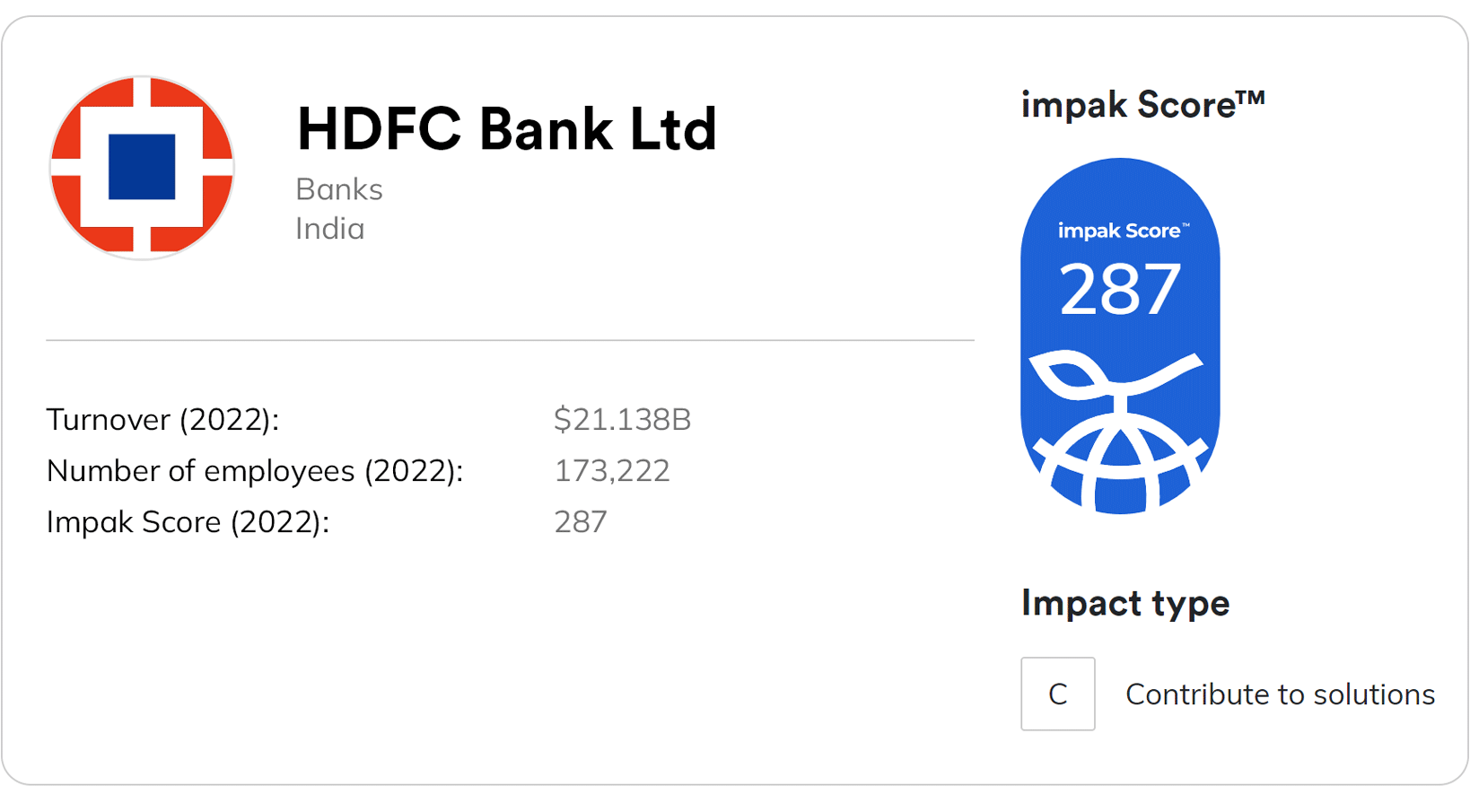
Strategy 1: Through the creation of new products and services (integrated into the business model and generating revenue) by the company, which can also allow other actors in the value chain to mitigate their negative impacts;
Strategy 2: Through its practices, the company can use its value chain as a lever for impact. Whether it is through its relationship with its suppliers, its customers, its employees, or its innovation practices, the company takes advantage of its business relationships to generate a positive impact. This impact goes beyond mitigation measures to reduce negative impacts, is integrated into the value chain, and does not directly contribute to revenue generation.

🏦 The Banking Crisis
The fallout from the recent bank failures in the Global North (notably the Silicon Valley Bank, First Republic, and Crédit Suisse) continues to ripple throughout the economy and threatens to tighten borrowing conditions, which could hit small businesses the hardest. This banking crisis is only the latest in a series of events that have contributed to the sustained lack of confidence in the banking sector, whose reputation is not generally associated with the term “positive impact”. As one would expect, the irony is in the design of the banking system, which favours those already endowed with capital while those most in need are often left marginalized.
Meanwhile, in the Global South, certain banks have made notable advancements in improving access to credit and promoting financial inclusion. They have achieved this through understanding the unique circumstances in which they operate and by engaging with the populations they serve. In this article, we look at how HDFC Bank, India’s largest private bank which is listed on the Bombay Stock Exchange, has proven that, in fact, a bank can accomplish the twin objectives of profitability and being a force for good.
The Targeted Sustainable Development Goals
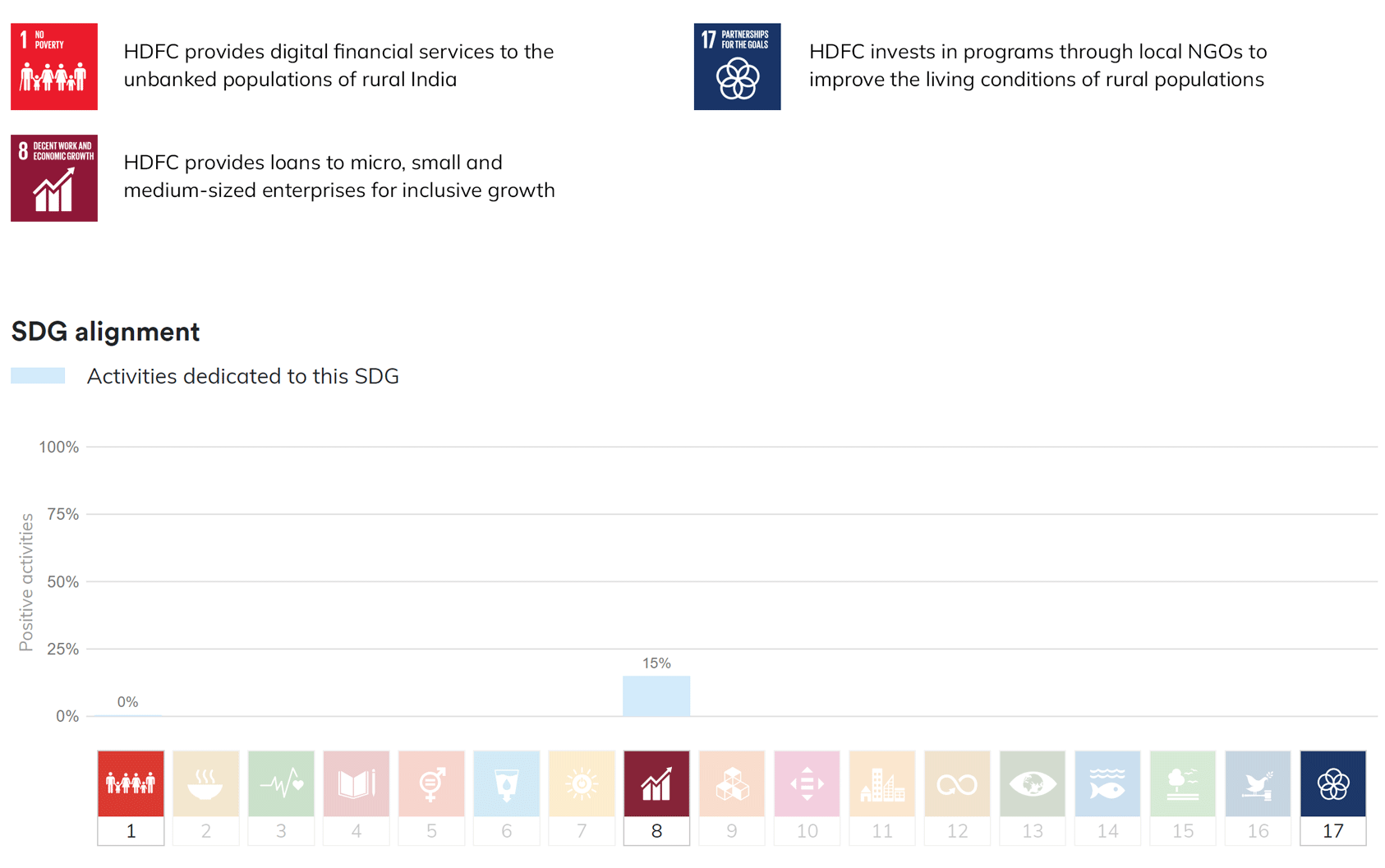
Since a sizable portion of India’s population lives in rural areas where socio-economic conditions greatly lag behind urban areas, HDFC Bank is committed, through its business model, to resolving long-standing issues of poverty, gender inequality, health, and education in rural India. It provides emergency loans to emerging micro, small and medium enterprises (MSMEs) and microloans to the unbanked, contributing to SDG 8.3. Moreover, it continues to enroll unbanked populations in the most remote parts of the country into formal financial channels, educate them on digital banking, and provide access to mobile banking applications, all of which align with SDG 1.4. Lastly, through its flagship CSR program, the Holistic Rural Development Program (HRDP), HDFC partners with local NGOs and invests directly in their programs to improve the living conditions of rural populations, contributing to SDG 17.16-17.
Stakeholder Identification and Impact Measurement
According to the Impact Management Framework, there are Five Dimensions of Impact: What, Who, How Much, Contribution and Risk. The ‘Who’ and ‘How Much’ are particularly well-answered by HDFC.
Emerging micro, small and medium enterprises
At the outset of any program, the process of stakeholder identification is crucial to generating a positive impact. To understand why HDFC excels in this area, one must understand the context of the banking system in India. “Priority sectors lending” is a term that describes the role exercised by The Reserve Bank of India (RBI) vis-à-vis banks, which involves requiring banks to dedicate funds to specific sectors of the economy that may require credit and financial assistance. As such, lending to the less fortunate participants of the agriculture sector and MSMEs in rural areas is both a mandate and an opportunity for HDFC. In FY 2021, 15.17% of the Bank’s total assets were allocated to this segment.
Unbanked populations
What’s more, with half of the Bank’s branches located in rural and semi-urban areas, it has committed to bringing more under-banked sections of the population into formal financial channels. This effort includes, among other things, providing education on digital banking and extending micro-loans to the most disadvantaged castes and tribes of India, notably street vendors and women. Of course, this effort comes with new account openings and loan extensions to the targeted groups, which are facilitated by HDFC’s digital suite of products and services. Total investments in this activity amounted to 0.34% of the total assets of the Bank.
The Holistic Rural Development Program (HRDP)
Last but not least, the Bank invested 2,105 million rupees, about 0.17% of its total assets, in the HRDP program’s development, including investments in renewable energy, health and sanitation, skill development, livelihood enhancement, and education. In 2020, the Bank enlisted a third party, RTI International India, which is part of a global non-profit research organisation, to complete an assessment of the program’s effectiveness in a sample region. The results of the study are presented in an exhaustive public Impact Assessment Report, supplemented by independent opinions and recommendations for the future of the program. This initiative highlights the importance of understanding not only the stakeholders’ characteristics and needs (Who), but also the impact experienced by them over time (How Much). measured through in-depth interviews and discussions with NGO partners, program beneficiaries and community stakeholders.
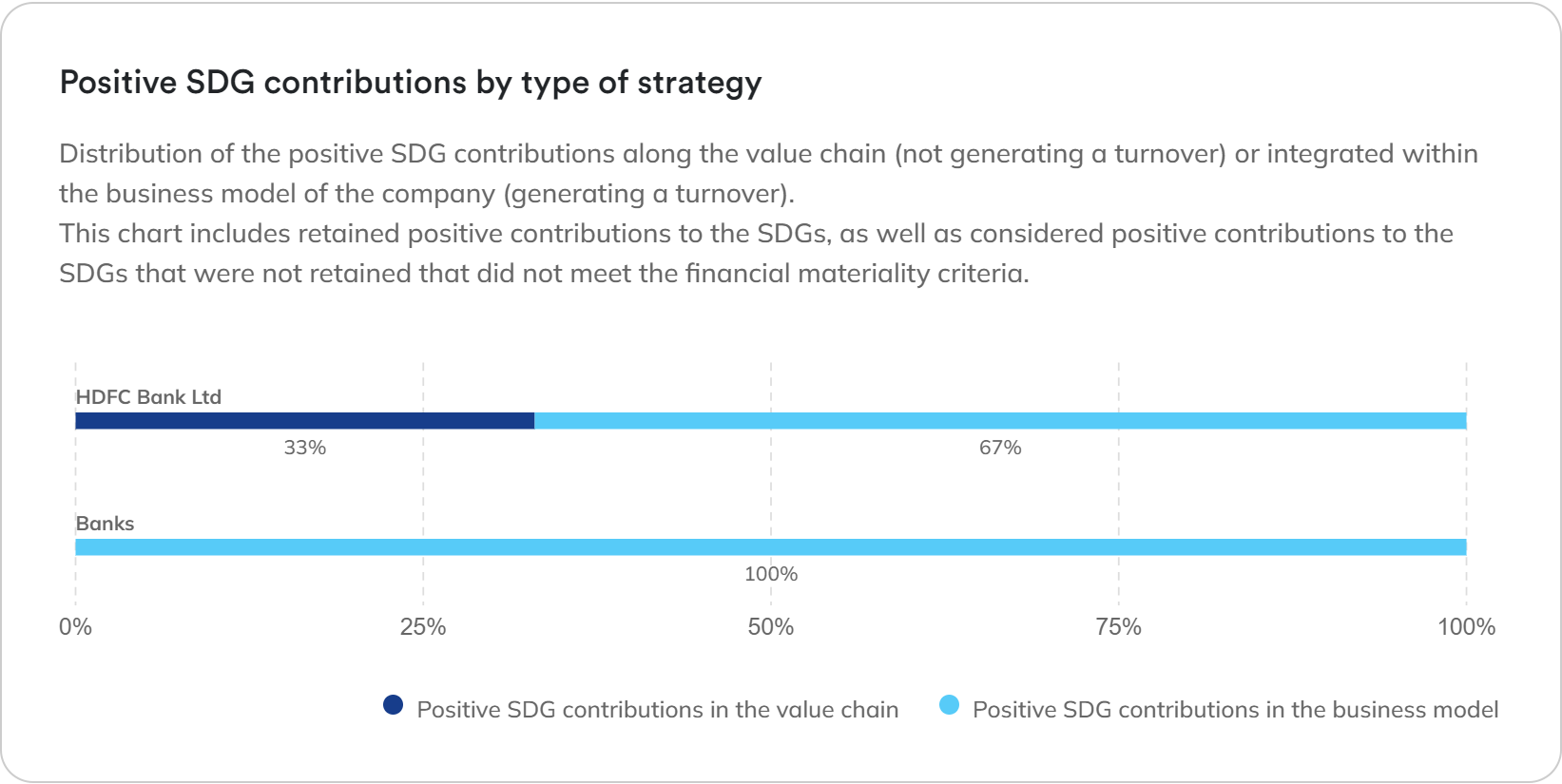

✅ Conclusion
HDFC, India’s largest private bank, stands out as a company with a rating of “C: Contributes to Solutions” in our universe of banking institutions, particularly through its HRDP program with its focus on maximizing positive outcomes for the most underserved populations in India. The program’s success stems from aligning business activities with stakeholder needs and employing stakeholder-centered impact measurement. It also serves as an exemplary model for the banking sector, especially in regions of the Global North facing financial inclusion challenges for impoverished populations and small businesses.
Regardless of economic circumstances, prioritizing stakeholders in financial services is crucial for achieving the SDGs. As we approach the final decade for meeting the 2030 Agenda for Sustainable Development amidst global crises in public health, climate, and the economy, directing private finance towards the SDGs has never been more critical.
N.B. Microfinancing remains a controversial topic with varying effectiveness in addressing poverty and financial inclusion. It has led to both positive outcomes, helping millions of low-income individuals worldwide, and negative consequences, such as loan-sharking and over-indebtedness causing despair and even suicides. While acknowledging the imperfections of any system, policymakers, investors, and lenders should prioritize borrower protection. Development funders should incorporate consumer-oriented considerations into their operations and examine the loan collection process to prevent harm to borrowers. A stakeholder-centred impact study could be useful to reveal the extent to which microfinancing is having a lasting impact on the lives of the poor.
It is important to emphasize that a positive impact does not offset a negative impact. It is not because a company contributes positively to the SDGs that it can avoid its responsibility for reducing its own negative impacts. As such, the European Union has made this concept sacred: an activity is said to be sustainable if it demonstrates that it brings a substantial benefit to at least one of the six environmental objectives, but it must also avoid negative effects on the other five objectives (transition to a circular economy, pollution prevention and control; protection and restoration of biodiversity and ecosystems, etc.). Therefore, it is necessary to analyze the environmental impacts of financing projects, notably on biodiversity. Through its activities, HDFC Bank is also part of a sector that is at risk of poor communication and selling practices, gender inequity, and financing projects and companies generating negative environmental and social impacts. |
You may also like

Why single materiality is not good risk management
By impak Analytics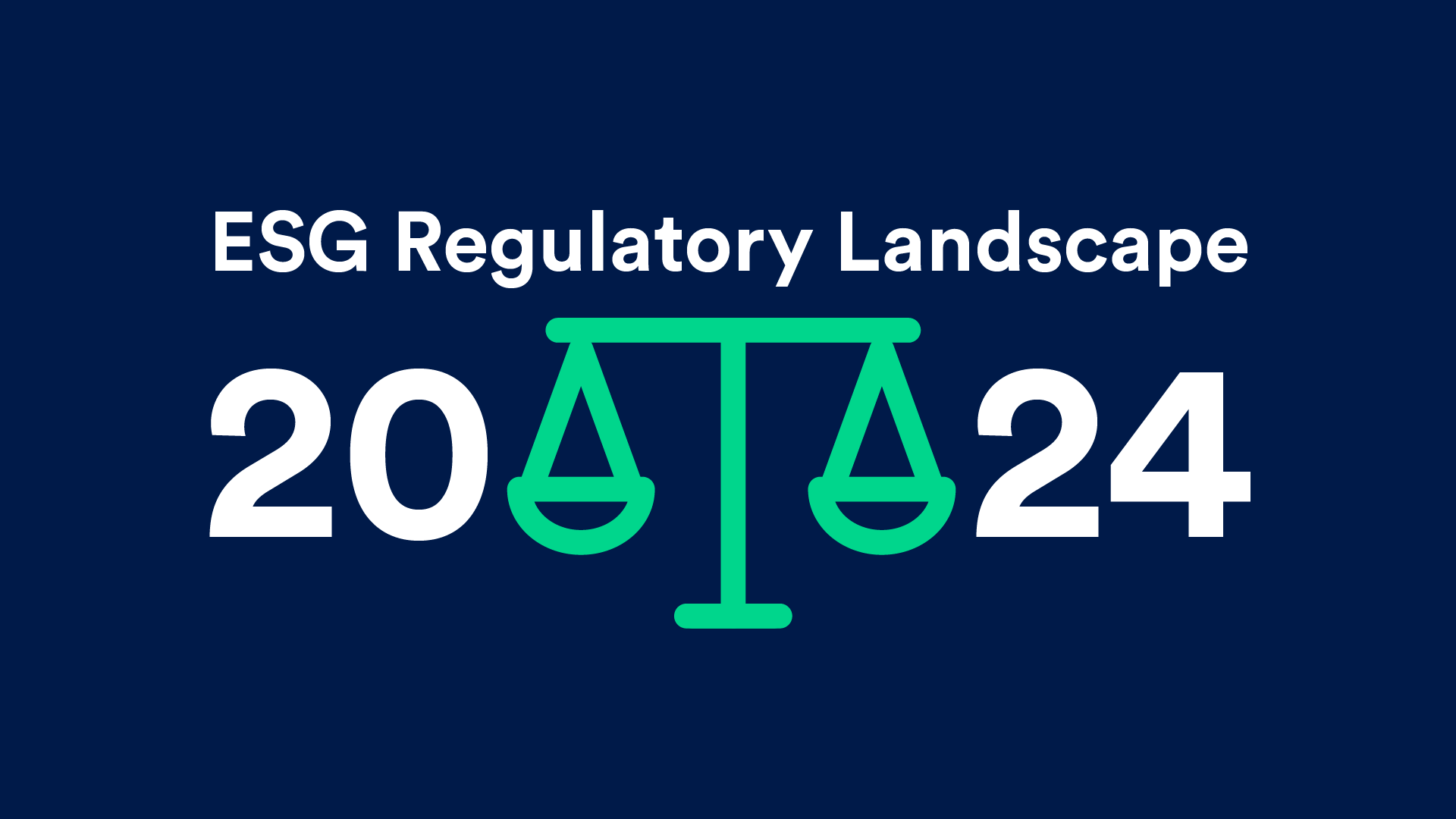
2024 ESG Regulatory Landscape
By impak Analytics